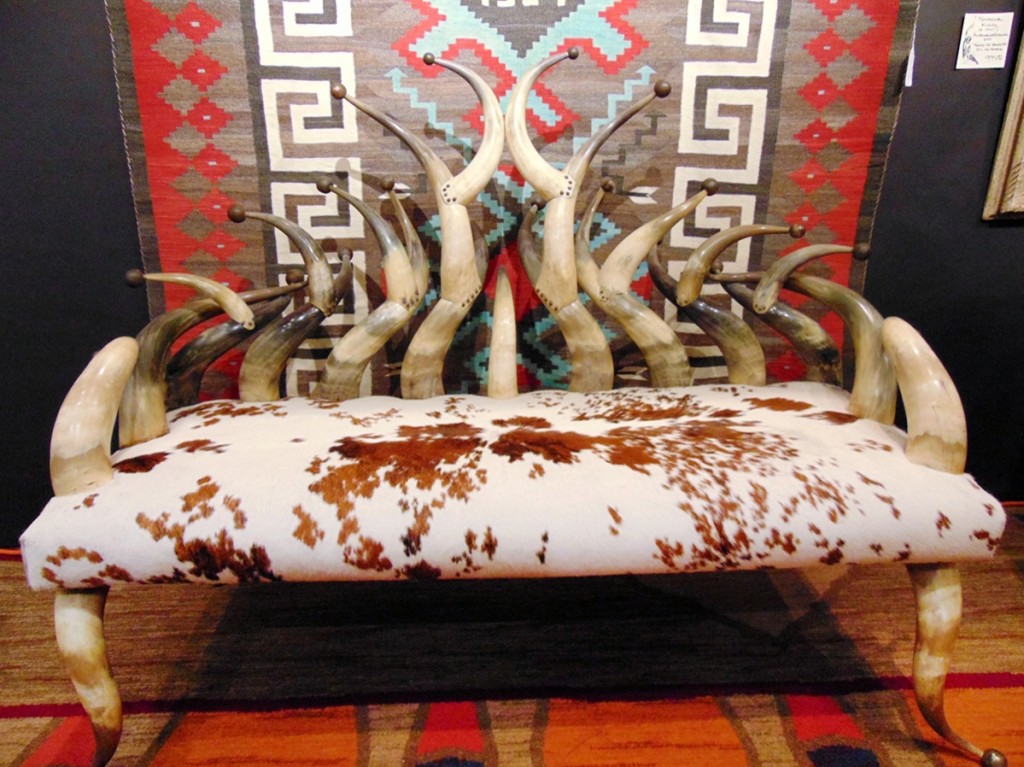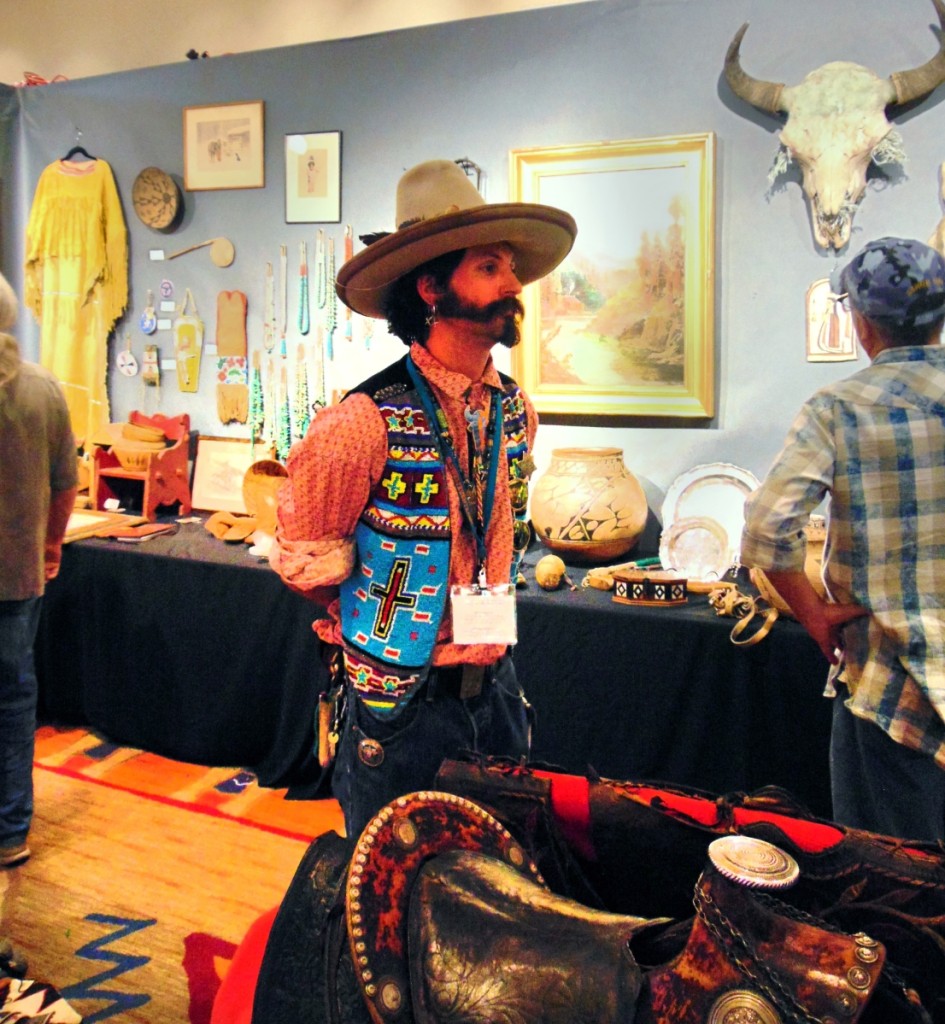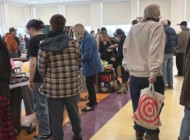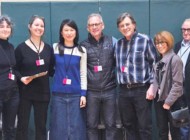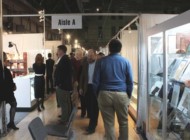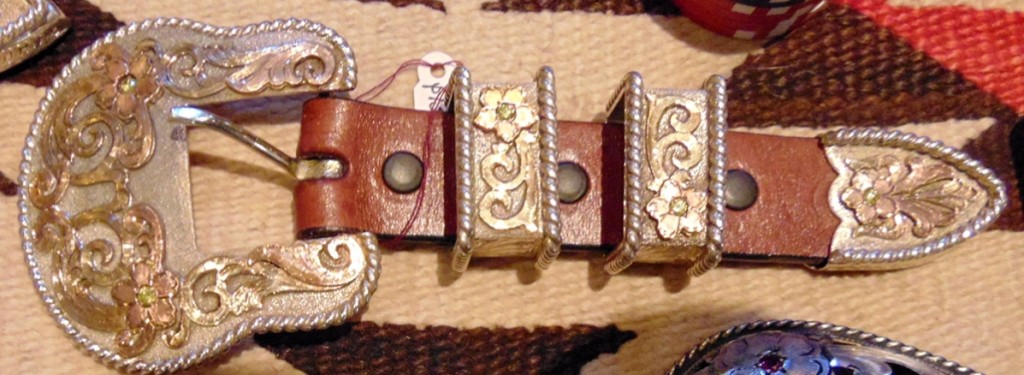
Silver, gold and diamond Ranger kit by Clint Mortenson, Mortenson Silver and Saddles, Santa Fe, $1,395.
Review and Photos by Walt Borton
SANTA FE, N.M. – Expectations were high for the second Santa Fe presentation of Brian Lebel’s Cody Old West Show, June 21-23, which last year generated large crowds, robust sales and much buzz in a town the locals like to call the second largest fine art market in America.
But high expectations were no challenge for the Cody show. Brian Lebel and Melissa McCracken Lebel maintained a waiting list and grew the show floor by 20 dealers to a total of 138, all the while still keeping the sense of wide open spaces that made last year’s premiere in Santa Fe’s Convention Center so refreshing. On Friday, the aisles were jammed with 100 early buyers, and when combined with regular attendance on Saturday and Sunday, the gate exceeded last year’s 3,000. Not bad when competing for a cowboy crowd with the redoubtable Rodeo de Santa Fe.
Of course, the Cody Old West Show is only new to Santa Fe. This year’s is the 30th anniversary of a show Brian Lebel created in Cody, Wyo., in 1989. It’s now among the ten oldest antiques events in America. In fact, Santa Fe now hosts the second oldest antiques show in the west, the Whitehawk Show, and the third oldest, the Cody Old West Show.
Part of the show’s durability is a successful blend of less formal tabletop dealers in the breezy center and back aisles, with formal booths featuring prestigious, well-known western dealers and galleries. So whether you’re a serious collector of the best silver work, the finest saddles and important Native American artifacts or in quest of a quirky antique for your cabin, a work-another-day pair of spurs or high fashion boots for this year’s Buckaroo Ball, the place makes the search interesting and fun.
For example, you could buy an elaborate boot jack designed to prevent a lady from displaying her ankle while removing her boot. That very object was available in the show’s center aisle for $425 from Sherry Stevenson of Czech Glass & Western Antiques, Pipe Creek, Texas, who demonstrated it with her tennis shoe.
If your hero just happens to be Will Rogers, then you could find a remarkable likeness of him in copper relief at Jim and Bobbi Olson’s Western Trading Post, Casa Grande, Ariz.
Reading matter was also available – in this case, very early versions of Roy Rogers and Dale Evans graphic novels that conveniently fit on a comic book rack, which Brian and Melissa sold from the Old West Events booth for $900.
Or if you want to decorate a wall with your concha belts when you’re not wearing them, the display in Robert Gallegos’ booth proves it’s a possibility, but it could be a bit pricey. This array ranged in price from $1,500 to $7,500.
Another element cementing the show’s popularity is that, save Rodeo de Santa Fe itself, there’s no place or time in town where you will encounter so much real-deal historic and contemporary cowboy attire on the hoof. The show cries out for the talent of the late Bill Cunningham, New York Times’ roving fashion photographer.
Bill Manns, longtime Santa Fe trader, horseman and western photographer, who last year had little left to pack up and take home, called this year’s show “even better,” saying that his opening day sales were the best in years. His table, in the same row with major antique firearms dealer Dan Pawley and saddler and silversmith Clint Mortenson, created an ongoing traffic jam.
Of course, important museum quality pieces were plentiful across the show. Ted Trotta and Anna Bono, New York City tribal art specialists who called the show “one of their best ever,” showed a stunning claw necklace from the Sauk Fox People. The Sauk Fox were forcibly relocated to Oklahoma from their homelands around Lakes Huron and Michigan in 1870, and this piece, circa 1900, was made there. It’s cow horn and otter and was priced at $11,500.
Christopher Selser Tribal Art, Santa Fe, showed a powerful Navajo serape, circa 1870, offered at $65,000, and Mary Nyholm-Vidano, MC Antiques, Niwot, Colo., is rumored to have sold 50 Navajo textiles during the weekend.
The Lusher Collection of Austin and Santa Fe sold an early Twentieth Century Sioux dress featuring an unusual use of metallic beads in the traditional Sioux geometric patterns. The dress, likely elk hide and obviously worn, according to Chris Lusher, sold “at the high end of what a ’20s Sioux dress would command,” putting it north of $4,000.
Mystic Warriors of Evergreen, Colo., consistently stopped traffic with two items of children’s attire, a Nez Pierce girl’s dress and a boy’s Plains buckskin shirt, probably Kiowa or Apache.
Tucked away on a wall in Jeff Hengesbaugh’s Calabaza booth were an 1840s Jemez shield and club, important both because of their age and that they were found in Texas, hundreds of miles from the Jemez Pueblo in north central New Mexico.
Last year’s show so impressed Santa Fe dealer Brant Mackley that he took a booth this year, featuring just a few important works, including a pair of Santee Sioux beaded britches, circa 1880, with the American flag motif, from a Belgian collection and priced at $6,800. The Santee, sometimes called the Dakota Sioux, traveled the northwestern reaches of the Mississippi River until forcibly relocated to a reservation in Knox County, Neb., in 1863.
Equally engaging, but less costly Sioux beadwork was found at Victoria Roberts of Indian Lodge Road, Albuquerque, N.M., in a vintage top hat with Sioux loom beading. The beaded Zeamer hat, in remarkable condition, including its original box, was $750.
Both in booths and on tabletops, the show offered an endless array of Squash Blossom necklaces, Navajo silver beads and Kewa (Santa Domingo) contemporary turquoise and coral sculptural rings, bracelets and earrings. Perhaps the most unusual piece of jewelry, however, was neither western nor Native American in origin, but distinctly so in motif. The unusual stones in a pendant shown by Miles and Miles Trading of San Francisco, are turquoise from Kazakhstan, known here as “Golden Hills.”
And while the show is generally light on furniture, those pieces shown are for the most part distinctly western, like a one-of-a-kind long-horn settee with protective brass horn tips and contemporary upholstery shown by Roadside America’s Gallery of the West, Santa Fe. Ted Birbilis attributed the piece to a Texas maker around 1880, saying the price was $5,500.
By show’s end Sunday afternoon, most vendors were more than pleased with this year’s traffic and sales. Even those for whom business wasn’t strong were planning on returning to next year’s show, June 27 and 28 at the Santa Fe Convention Center. First time exhibitor designer Cheryl Long of Pure West – Pure Vintage, Round Top, Texas, was repacking a lovely mink and leather handbag when she said that while her “merchandising wasn’t quite right for this year’s show, I’m definitely returning.” And whispered she’s already looking at the Santa Fe real estate market.
So you see, Santa Fe still holds its own as a major attraction in the Land of Enchantment, especially at the Cody Old West Show.

